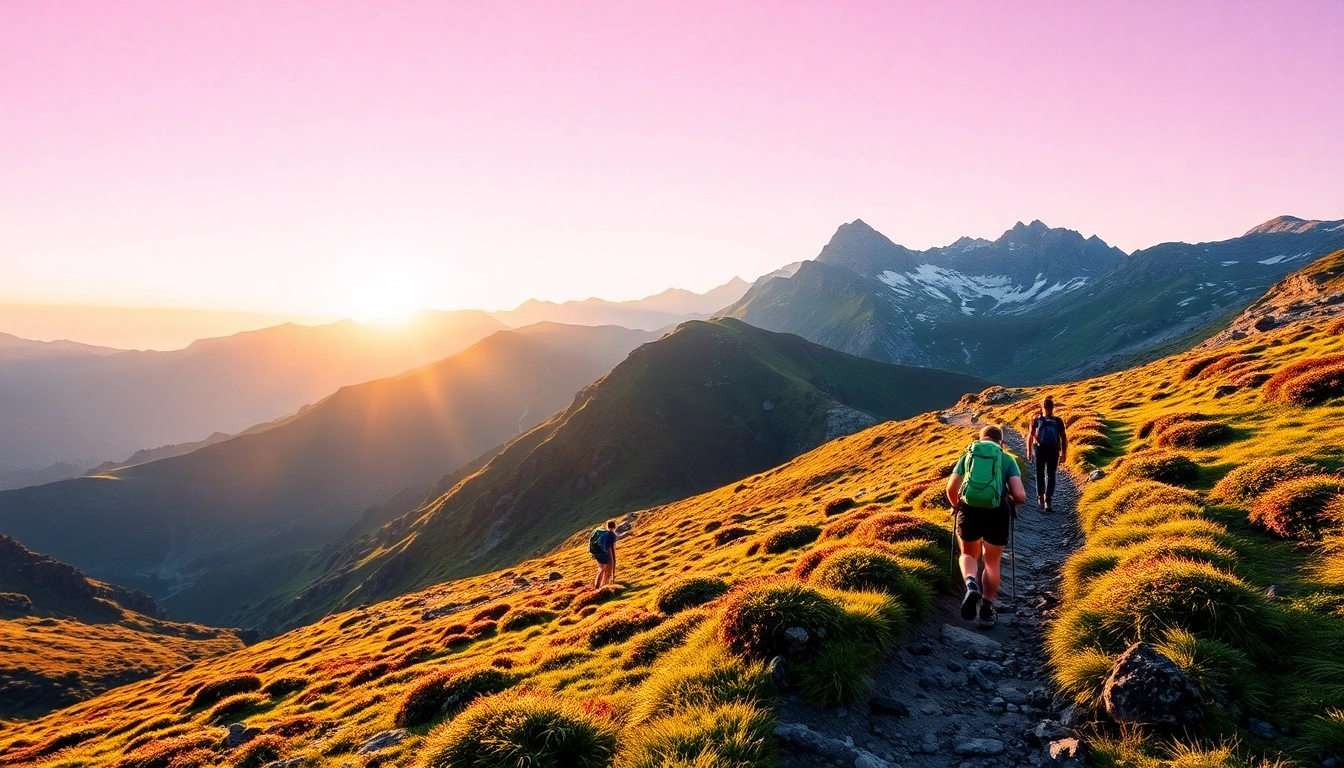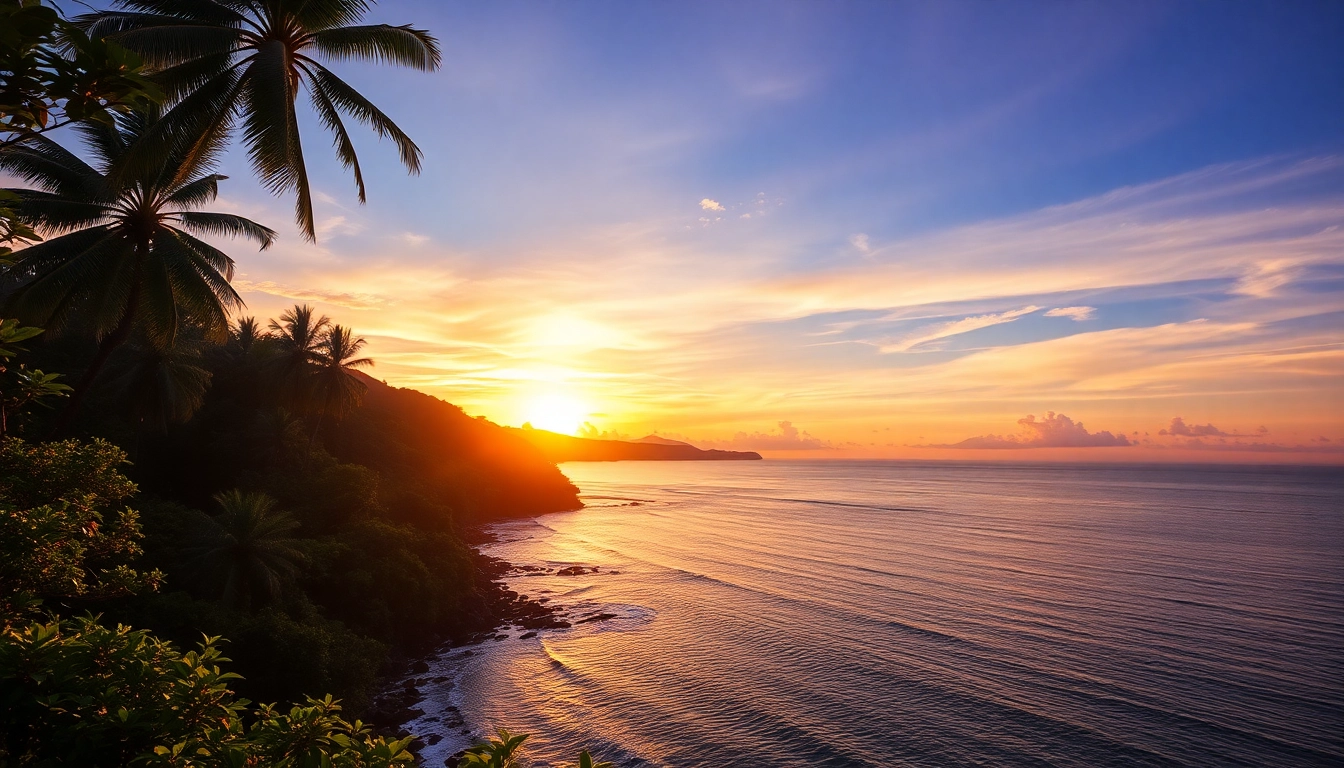Master the Art of Hiking: Tips, Trails, and Gear for Your Next Adventure in Indonesia
Introduction to Hiking in Indonesia
Indonesia, known for its stunning landscapes and rich biodiversity, is a haven for hiking enthusiasts. From lush rainforests and active volcanoes to towering mountains and pristine beaches, the archipelago offers an unparalleled variety of terrains that cater to hikers of all levels. Whether you’re seeking a challenging summit or a leisurely walk through scenic trails, Indonesia’s diverse ecosystems provide countless opportunities to immerse yourself in nature’s beauty.
Engaging in hike in Indonesia not only offers physical health benefits but also fosters mental tranquility, cultural immersion, and environmental awareness. As a premier destination for outdoor adventures, Indonesia’s hiking trails are gaining international recognition, making it a top choice for travelers seeking both adventure and authentic local experiences.
What Makes Indonesia a Perfect Hiking Destination
Indonesia’s unique geographical features—comprising over 17,000 islands—create an exceptionally diverse hiking landscape. The country boasts the world’s most active volcanoes, tropical rainforests, granite peaks, and serene coastal paths. This diversity ensures that every hiker, regardless of skill level, can find a suitable trail that challenges and delights.
One of the key attractions is the presence of iconic volcanoes such as Mount Rinjani in Lombok, Mount Bromo in East Java, and Mount Kerinci in Sumatra. These volcanoes not only offer breathtaking panoramic views but also provide the experience of walking on volcanic craters and ash fields. The variety of ecosystems—from the dense rainforests in Borneo to the high-altitude terrains of Papua—further elevates Indonesia’s status as a premier hiking destination.
Additionally, Indonesia’s vibrant culture and hospitable local communities enrich the hiking experience. Travelers can engage with indigenous traditions, taste authentic cuisine, and learn about local conservation efforts, making each hike a holistic cultural journey. The country’s well-preserved national parks and protected areas also emphasize sustainable tourism, supporting conservation and local economies alike.
The Benefits of Regular Hiking for Well-being
Hiking is more than just an outdoor activity; it’s a proven pathway to improved health and well-being. Regular engagement in hiking offers a multitude of physical, mental, and emotional benefits. Physically, it enhances cardiovascular health, strengthens muscles, improves balance, and increases stamina. Mentally, it reduces stress, boosts mood, and promotes mindfulness.
Nutritional benefits can also be achieved through proper planning of hikes, incorporating nutrient-dense snacks and hydration strategies. Additionally, connecting with nature through hiking has been linked to decreased levels of anxiety and depression, fostering a sense of calm and clarity.
In Indonesia, where natural landscapes serve as a backdrop for countless trails, incorporating hiking into your routine helps foster a deeper appreciation for environmental conservation and cultural heritage. As highlighted by studies, those who regularly hike tend to lead more active lifestyles, exhibit higher levels of resilience, and experience greater life satisfaction.
Popular Hiking Spots Across the Archipelago
- Mount Rinjani, Lombok: Indonesia’s second-highest volcano, offering an exhilarating multi-day trek with spectacular crater lakes, hot springs, and mountain vistas.
- Mount Bromo, East Java: Famous for sunrise views over the Tengger Caldera, accessible via relatively easy hikes suitable for beginners.
- Kerinci Seblat National Park, Sumatra: Home to Mount Kerinci, the highest volcano in Indonesia, featuring lush rainforests and diverse wildlife.
- Raja Ampat, West Papua: For those interested in coastal adventures, trails overlooking turquoise waters and marine biodiversity await exploration.
- Bukit Lawang, Sumatra: Known for orangutan viewing and jungle trekking through tropical rainforests.
Planning Your Hiking Adventure
Choosing the Right Trails and Difficulty Levels
Effective planning begins with understanding your fitness level and skillset. Indonesia offers trails ranging from easy nature walks to demanding multi-day mountain excursions.
Beginner Trails: Coastal boardwalks and gentle forest paths in Bukit Timah (Bali), suitable for families and casual hikers.
Intermediate Trails: Rinjani’s first-day ascent or moderate rainforest hikes in Tewadaru, offering scenic views and manageable elevation gains.
Advanced Trails: Summiting active volcanoes like Mount Kerinci or Mount Semeru, requiring proper mountaineering equipment and experienced guides.
Key considerations include trail length, elevation gain, terrain difficulty, and weather conditions. Always consult detailed maps, local guides, and recent trail reports to ensure safety and preparedness.
Essential Gear and Safety Equipment
Proper gear is critical for a successful and safe hike. Essential equipment includes:
- Sturdy hiking boots with good ankle support
- Moisture-wicking clothing and weather-appropriate layers
- Navigation tools such as GPS devices or compass & map
- Sun protection: hats, sunglasses, and sunscreen
- Hydration systems: water bottles or hydration packs
- Nutrition: energy bars, dried fruits, trail mix
- First aid kit with essentials like antiseptics, bandages, and pain relievers
- Emergency communication device and whistle
- Lighting: headlamps or flashlights for early dawn or night hiking
Local guides and porters are invaluable, especially for challenging terrains. They can provide safety tips, cultural insights, and logistical support, enhancing both safety and the overall experience.
Best Seasons and Weather Considerations
Indonesia’s tropical climate means that weather varies across regions and seasons. The dry season, typically from May to September, offers clearer skies and more stable conditions—ideal for most hikes. Conversely, the rainy season (October to April) can bring heavy downpours, slippery trails, and increased risk of landslides, especially in mountainous areas.
Packing appropriately for weather fluctuations is crucial. Waterproof jackets, quick-drying clothes, and proper footwear are essential. Always check local weather forecasts before heading out, and consider avoiding high-altitude or volcanic hikes during adverse weather conditions to minimize risks.
Hiking Techniques and Tips
Navigation and Trail Etiquette
Proper navigation involves understanding trail markers, maps, and the use of GPS devices. It’s vital to stay on designated paths to preserve ecosystems and prevent erosion. Respect local customs and wildlife, maintaining a low profile and minimal environmental impact.
Leave no trace principles should guide every hike. Carry out all trash, avoid disturbing flora and fauna, and seek permission when visiting community-managed trails or sacred sites.
Hydration, Nutrition, and Rest Strategies
Hydration is paramount, particularly in Indonesia’s humid regions. Drinking water regularly—about one liter every hour—is recommended. Use electrolyte supplements in hot climates to replenish salts lost during sweating. Nutrient-rich snacks sustain energy levels, while taking regular breaks prevents fatigue and injuries.
Adjust your pace according to terrain difficulty and personal fitness levels. Recognize signs of exhaustion or altitude sickness and turn back if necessary. Proper rest also allows your body to recover and prepare for upcoming segments of the hike.
Environmental Conservation and Responsible Hiking
Responsible hiking involves practicing sustainable tourism. This includes minimizing waste, avoiding single-use plastics, respecting wildlife habitats, and supporting eco-friendly accommodations and local businesses. Educate fellow hikers about conservation efforts and participate in trail clean-up activities when possible.
Supporting community-based tourism initiatives benefits local populations and promotes preservation of natural and cultural heritage. Always adhere to the rules and guidelines set by national parks and protected areas.
Enhancing Your Hiking Experience
Photography and Sightseeing Opportunities
Indonesia’s landscapes present endless opportunities for photography. Capture sunrise views from Mount Bromo, seascapes in Raja Ampat, or lush canopy shots in Taman Nasional Gunung Leuser. Use a good camera or smartphone, and consider time-of-day lighting for dramatic effects.
Be respectful of nature and local communities while taking photographs. Always ask permission when photographing people or sacred sites, and leave areas as pristine as you found them.
Local Culture and Community Engagement
Hiking in Indonesia also provides a chance to immerse yourself in local culture. Engage with indigenous tribes, learn traditional crafts, and participate in local festivals when possible. Support community tourism projects that promote cultural preservation and sustainable development.
Using Technology for Navigation and Planning
Technology enhances the safety and convenience of your hiking expedition. Smartphone apps like offline maps, trail tracking, and weather updates are invaluable. Additionally, social media and travel forums provide useful tips, recent trail conditions, and local contacts.
Ensure devices are fully charged, carry portable chargers, and familiarize yourself with digital navigation tools before setting out.
Post-Hike Care and Motivation
Preventing Injuries and Recovery Tips
Proper post-hike recovery helps prevent injuries and aids muscle rebuilding. Stretching sessions focusing on legs, back, and shoulders are effective. Hydrate well and consume protein-rich foods to assist muscle repair.
Use ice packs or cold compresses for strained or swollen areas, and consider massage or foam rolling for deep tissue relief. Rest days are essential, especially after strenuous climbs or multi-day hikes.
Building a Sustainable Hiking Routine
Consistency is key to gaining health benefits and improving skills. Develop a manageable schedule, gradually increasing trail difficulty and duration. Incorporate various terrains to build versatility and resilience.
Track your progress, set personal goals, and celebrate milestones to stay motivated. Joining local hiking clubs or online communities fosters camaraderie, accountability, and knowledge sharing.
Sharing Your Experience and Inspiring Others
Document your adventures through blogs, social media, or photo journals. Sharing stories and tips encourages others to explore Indonesia’s natural beauty responsibly. Inspire a community of nature lovers committed to conservation and active living.

